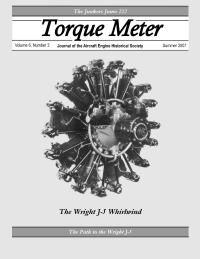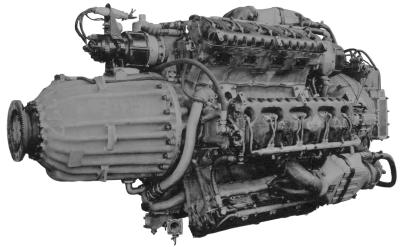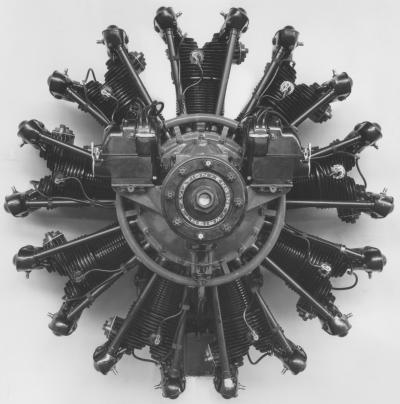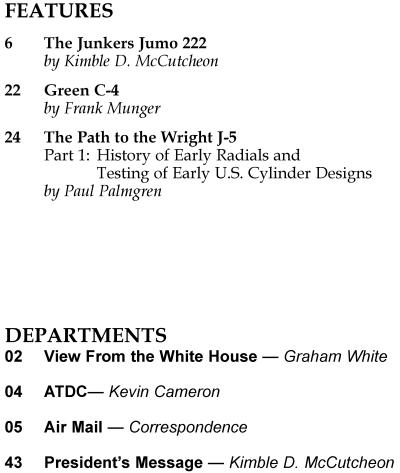
Torque Meter
Summer 2007 Issue
 |
 |
The Junkers Jumo 222 Early in 1946, the USAAF Power Plant Lab at Wright Field obtained several captured Junkers Jumo 222A/B and E/F engines from U.S. Navy Engine Test Station in Philadelphia, Pennsylvania. The Jumo 222 was a 24-cylinder, liquid-cooled engine with six banks of four cylinders each arranged radially about a common crankcase. The Navy had performed a cursory examination and planned to test the engine, but due to the lack of facilities and other difficulties, little was done. Wright Field personnel began detailed inspection of the engines and translated several technical papers about the Jumo 222 from German to English. According to German test information, later versions of the Jumo 222 performed extremely well at high altitudes. One object of the inspection and testing was to discover whether this was true and why. There was also considerable interest in the fuel injection and engine control systems. Pratt & Whitney, Allison and Lycoming, all with large engine developments under way, wanted information on the engine. |
|
Aero Engine Drawings by Frank Munger |
 |
The Path to the Wright J-5 I was recently reminded that May 20, 2007 was the 80th anniversary of Charles A. Lindbergh’s non-stop New York to Paris flight. The engine that got him there after more than 33 hours of flying time was the Wright Aeronautical Corporation’s J-5 "Whirlwind". By the end of 1927, the J-5 had also conquered the Pacific from San Francisco to Hawaii twice and Atlantic to Europe twice again. What made the J-5 an early record setter and what did it take to design and develop this early air-cooled masterpiece? Was there any one development that made the J-5 into one of the first reliable, air-cooled American aircraft engines? The development of the Wright J-5 is wrought the usual turmoil over new technologies relating to design, metallurgy and manufacturing but specifically with numerous problems concerning cylinder head and valve designs that would cool and be durable. Furthermore, there was a mix of corporate politics and characters along with government research funding for the military after the First World War that is beyond the scope of this article but perhaps food for a later story. The J-5, for the most part, resulted from a purchased design acquired when Wright Aeronautical bought out the much smaller Lawrance Aero Engine Company at the insistence of the U.S. Navy in 1923. But during that time, Wright continued work with the U.S. Army Air Service on larger air-cooled radials (Simoon, P-1, P-2) as well as the R-1 (aka R-1454). In all early air-cooled projects, cylinder cooling and exhaust valve development consumed much of the time toward producing a reliable, air-cooled radial. |
